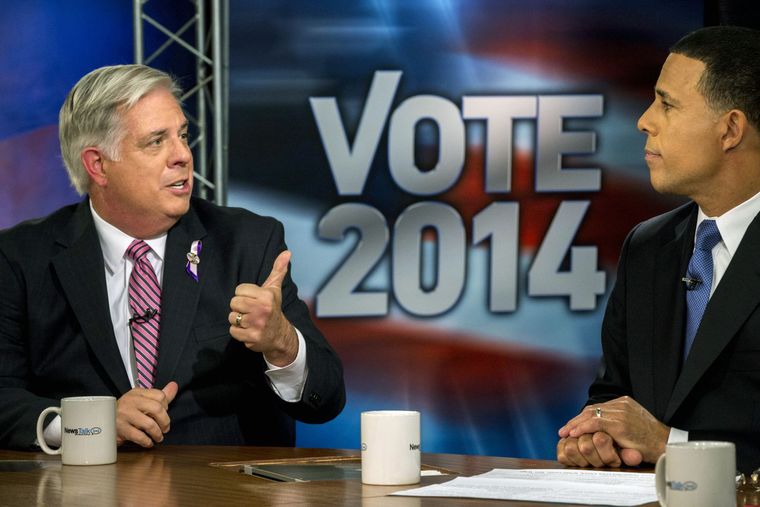Larry Hogan: A voice for change in Maryland
Editor’s Note: This column represents the views of the author and not necessarily Baltimore Post-Examiner.
In 1980, Ronald Reagan posed the following question to the American people in a debate with then-President Jimmy Carter: Are you better off than you were four years ago?
More than thirty years later, it is still important for voters to ask themselves this question before stepping into the voting booth.
When Marylanders head to the polls on Nov.4, the election will most likely be a referendum on Martin O’Malley’s eight years as governor, with Lt. Gov. Anthony Brown’s unequivocal acquiescence.

Republican candidate Larry Hogan may benefit from this scenario and Brown will not be able to hide from the tax and spend initiatives he supported as O’Malley’s No. 2 man.
As Hogan mentioned in the first debate, O’Malley has approved forty tax increases since taking office in 2007. The most controversial of these is the Storm Water Management Fee; more commonly known as the “rain tax.” Additional burdens have been applied to gasoline, tobacco, and alcohol.
These policies have had a devastating effect on the state’s middle class, and as a result over thirty-thousand Marylanders decided to seek refuge in other parts of the country.
Many employers have also left the state during O’Malley’s tenure in office. Among these include an estimated 8,000 small businesses.
The Maryland Public Policy Institute claims that Maryland has lost $330 million in taxes in the last decade and that “According to the Maryland Comptroller’s Office, the number of taxpayers in this category (those older than 65 with a taxable income of $500,000 or more) declined steadily between 2007 and 2010- from 2,161 to 1,543.”
Brown defended these tax increases by claiming that they were necessary to combat rising costs in college tuition and to improve miscellaneous infrastructure problems.

But taxes aside, it is uncertain whether the Lieutenant Governor has sufficient experience to serve as an effective manager.
Brown failed to adequately perform the major task that was assigned to him in his current position: implementing Maryland’s health care exchange program via the Affordable Care Act.
Not only was the exchange’s website riddled with errors (which delayed many people from signing up for alternative healthcare plans) but will cost taxpayers an estimated $43 million to repair.
Brown is still facing heavy criticism for his failure to exercise decisive leadership in carrying out that task, and Hogan rightfully decided to zero in on this vulnerability during their second debate on Monday evening.
The Lieutenant Governor also wants to initiate a program that would provide children ages four and older with a free pre-school education. However, he has not come up with a credible plan as to how it would be funded.
Brown has repeatedly stated that he would not raise taxes as governor, but such claims are dubious considering his close ideological proximity to O’Malley.
It is for these reasons as well as others that the Lieutenant Governor’s popularity is steadily declining.
A Baltimore Sun poll taken earlier this month illustrated that Brown’s once gigantic lead over Hogan had shrunk to a mere seven points (49 percent to 42 percent). That same poll also revealed that many Democrats are indifferent to the Lieutenant Governor’s candidacy.
However, it remains to be seen whether Hogan can gain enough support to defeat an unapologetic liberal in a state where registered Democrats encompass sixty-percent of the electorate.
But the answer to Reagan’s question is simple enough for any honest observer to recognize.

Bryan is an award-winning political journalist who has extensive experience covering Congress and Maryland state government. His work includes coverage of the election of Donald Trump, the confirmation hearings of Supreme Court Justice Brett Kavanaugh and attorneys general William Barr and Jeff Sessions-as well as that of the Maryland General Assembly, Gov. Larry Hogan, and the COVID-19 pandemic.
Bryan has broken stories involving athletic and sexual assault scandals with the Baltimore Post-Examiner.
His original UMBC investigation gained international attention, was featured in People Magazine and he was interviewed by ABC’s “Good Morning America” and local radio stations. Bryan broke subsequent stories documenting UMBC’s omission of a sexual assault on their daily crime log and a federal investigation related to the university’s handling of an alleged sexual assault.

